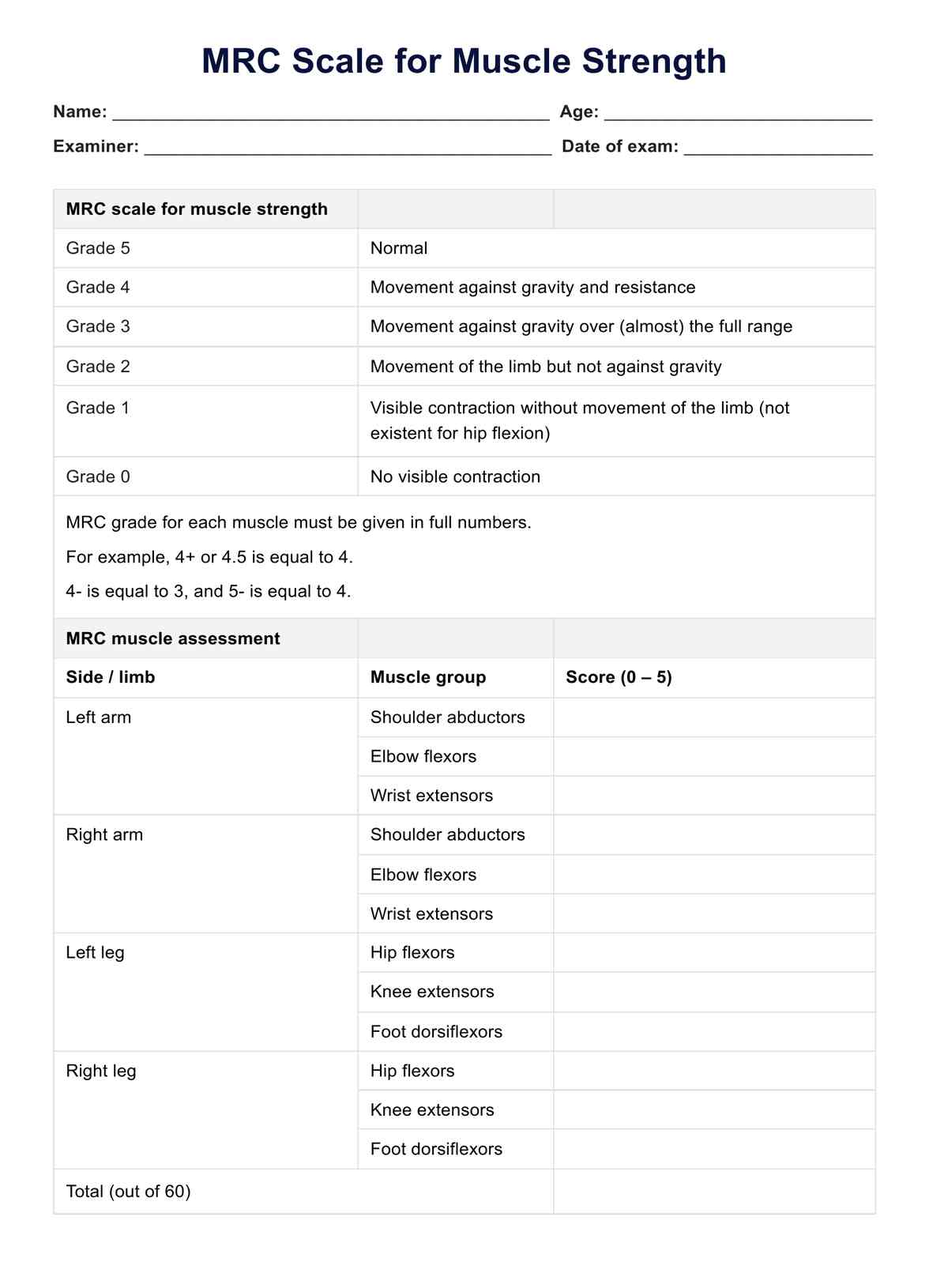Muscle strength is tested by evaluating key muscles against the examiner's resistance, using grading scales like the MRC scale, which ranges from 0 (no muscle activation) to 5 (full strength).

MRC Scale for Muscle Strength
Enhance patient care with our guide on regular muscle strength testing using the MRC scale. Diagnose and monitor neuromuscular conditions effectively!
Use Template
MRC Scale for Muscle Strength Template
Commonly asked questions
Muscular strength is assessed systematically by applying resistance to specific muscle groups and grading the patient’s ability to move against this resistance, often using methods like manual muscle testing.
A muscle strength test tool can include dynamometers, which provide precise measurements, and manual muscle testing scales, such as the MRC scale, for evaluating muscle power.
EHR and practice management software
Get started for free
*No credit card required
Free
$0/usd
Unlimited clients
Telehealth
1GB of storage
Client portal text
Automated billing and online payments











